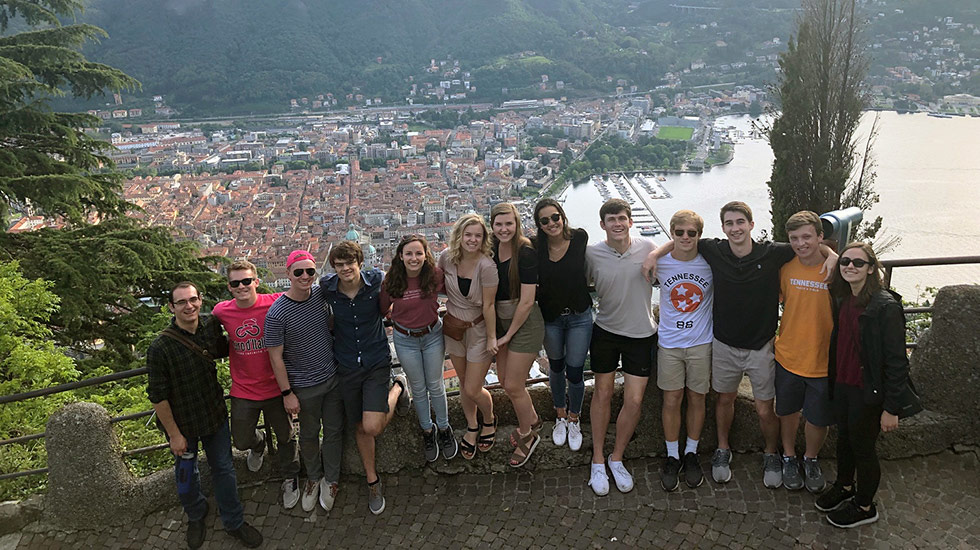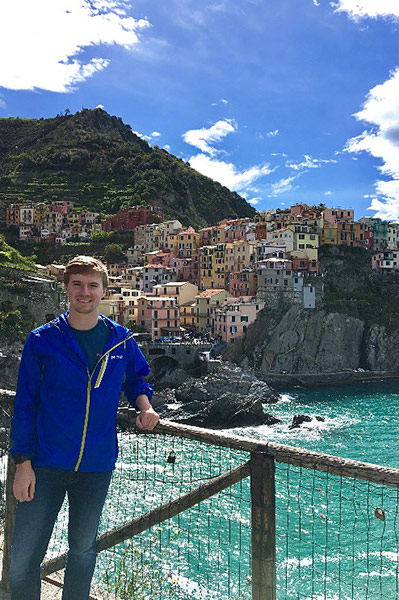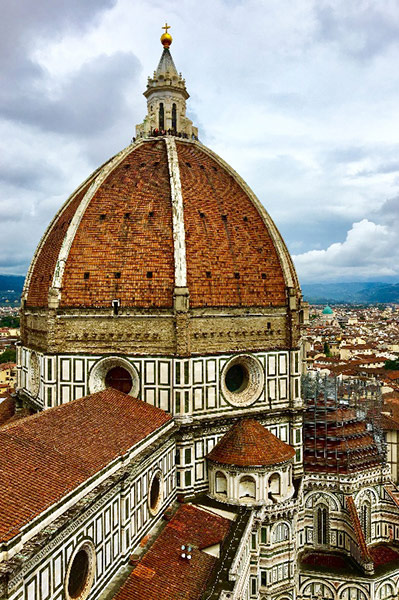CBE undergraduate research assistant Noah Dunlap wrote about the three weeks he spent in Milan as part of mini-term study abroad course.
It truly felt like I had lived in Milan for well over a month, yet at the same time it felt like I had only arrived the day before when I was preparing to catch my flight back to the U.S. In reality, the trip was only three weeks, but the adjustment to living in Milan was seamless. The city, and really the whole country, was more than accommodating of the language barrier between English and Italian. I certainly managed to adapt my diet to the local cuisine, as I consumed more carbohydrates in my three-week stay than any other period in my life and enjoyed every single meal. I found all too many occasions to “treat myself” to a decadent meal, but it was too much to resist. I also experienced some things Italians might take for granted: a soccer match, an Italian barber shop, and so, so many gelaterias, just to name a few. Maybe it was just the new atmosphere, but I felt that I was able to let my guard down and do my best to engage in the local culture.
During the weekend trips I was able to take to Cinque Terre, Rome, Florence, and Lake Como, I saw some of the most profound and amazing things I have ever seen. The Sistine Chapel alone made the trip to Rome feel worth it, but we also managed to make stops at the Colosseum, St. Peter’s Basilica, and the Castel of Sant’Angelo all in that same day. After all that, we woke up at 6:00 am to catch the cheapest train we could to Florence to see the David statue and Florence’s iconic cathedral. I feel confident that I got the maximum value out of the trip, and I have no regrets about waking up at early hours to squeeze the most out of every moment.
In the classroom, I was exposed to a new subject, material science, with a great teacher, Kevin Kit, associate professor and director of the Cook Grand Challenge Honors Program. I had considered majoring material science during my freshman year, so it was rewarding to get at least an introduction to the field. As part of the class, I was able to study bikes in many different settings. We discussed structures and materials in class and then saw the process behind sourcing the materials at the Trafiltubi steel plant. Then we saw the end results of the building process at Rossignoli, a traditional, local bike shop, and Casati, a high performance, custom bike shop. Each showed different ways that materials could be utilized to construct machines for the right customer. To finish off the biking experience, we saw one leg of the Giro d’Italia race in Lake Como. All of the optimization techniques we learned in class finally made sense when we see racers separated by only seconds after hours and hours of racing. The class introduced challenging, interesting material while also allowing us to have free time in the evenings to explore the city

I have a new appreciation for bikes and for the science that is required to develop all the materials we use on a daily basis. Though I do not have plans to continue more deeply into material science classes, I now look at structures around me with a more thoughtful eye as to how much time it took to research which material would be used in that structure’s construction process. I loved every minute of the trip, and I would take it again, given the opportunity. It is hard to sum it up in words, but the Milan experience was every bit as good as I had hoped and only made me more excited to book my next trip to a new European country.


